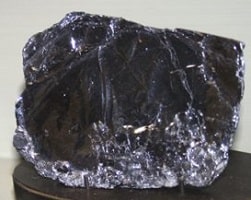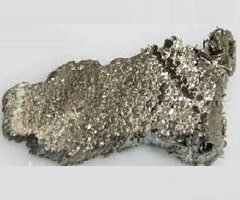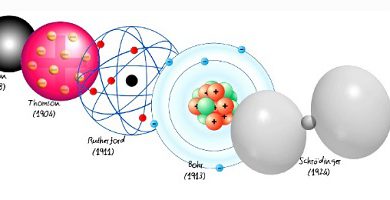We elaborate the uses of Beryllium and atomic properties with characteristics. Beryllium is a metallic gray-white chemical element with atomic number 4. Its symbol is Be and belongs to the group of alkaline earth metals and its usual state in nature is solid. Beryllium is located at position 4 on the periodic table.
You Can Visit Our Managed: Periodic Table Main Page
On this page you can discover the chemical properties of beryllium and information about beryllium and other elements on the periodic table such as magnesium, lithium, boron or hydrogen. You will also learn what beryllium is for and you will learn what its uses are through its properties associated with beryllium such as its atomic number or the usual state in which beryllium can be found.
You will see qualities of beryllium such as its melting and boiling point, its magnetic properties or what its chemical symbol is. In addition, here you will find information about its atomic properties such as the distribution of electrons in beryllium atoms and other properties.
For some elements, some of this information is unknown. In these cases we show the properties attributed to them.
Beryllium properties
The alkaline earth metals, among which is beryllium, have properties among which is being soft, colored and having a low density. Elements like beryllium have low ionization energy. All alkaline earth metals form ionic compounds except for beryllium.
The state of beryllium in its natural form is solid (diamagnetic). Beryllium is a white-gray metallic chemical element and belongs to the group of alkaline earth metals. The atomic number of beryllium is 4. The chemical symbol for beryllium is Be. The melting point of beryllium is 1551.15 degrees Kelvin or 1279 degrees Celsius or degrees Celsius. The boiling point of beryllium is 3,243.15 Kelvin or 2,971 degrees Celsius or degrees Celsius.
Uses of beryllium
Beryllium is a light metal that has a high melting point and resists corrosion by concentrated nitric acid. If you have ever wondered what beryllium is for , here is a list of its possible uses:
- Probably the most important use of beryllium is in radiation windows for X-ray tubes. Beryllium is ideal for this use as it has very low X-ray absorption.
- Beryllium is used in the pipes of many high-energy particle physics collision experiments (such as the Large Hadron Collider). The stiffness of the metal allows to create a powerful vacuum.
- Beryllium is used as a lightweight component of military equipment and in the aerospace industry. It is used in high-speed aircraft, missiles, space vehicles, and communications satellites.
- It is one of the components of metal springs, non-sparking tools and electrical contacts.
- Naval personnel use beryllium tools when working with or near naval mines. Beryllium is a non-magnetic material and most naval mines detonate when they come in contact with something magnetic.
- Beryllium is used in the design of nuclear weapons. It is used as the outer layer of the well in the primary stage. It is an excellent inducer for implosion and is very good at reflecting neutrons.
- The low weight and high rigidity of beryllium make it perfect for use in high frequency speakers.
- Beryllium oxide is an excellent conductor of heat. For this reason, it is used in telecommunications by adding an insulating base plate of this material in high power transistors in radio frequency transmitters.
- Beryllium mirrors can also be used in telescopes.
Atomic properties of beryllium
The atomic mass of an element is determined by the total mass of neutrons and protons that can be found in a single atom belonging to this element. As for the position where to find beryllium within the periodic table of the elements, beryllium is in group 2 and period 2. Beryllium has an atomic mass of 9.0122 u.
The electronic configuration of beryllium is [He] 2s2. The electronic configuration of the elements, determines the form in which the electrons are structured in the atoms of an element. The average radius of beryllium is 112 pm, its atomic radius or Bohr radius is 1113 pm (Bohr radius) pm and its covalent radius is 89 pm.
You Can Visit Our Managed: Periodic Table Main Page
Beryllium characteristics
Below you can see a table showing the main characteristics of beryllium.
| Beryllium | ||
|---|---|---|
| Chemical symbol | Be | |
| Atomic number | 4 | |
| Group | 2 | |
| Period | 2 | |
| Appearance | white-metallic gray | |
| Block | s | |
| Density | 1848 kg / m3 | |
| Atomic mass | 9.0122 u | |
| Average radius | 112 pm | |
| Atomic radio | 111.3 pm (Bohr Radio) | |
| Covalent radius | 89 pm | |
| Electronic configuration | [He] 2s2 | |
| Oxidation states | 2 (amphoteric) | |
| Crystal structure | hexagonal | |
| State | solid | |
| Melting point | 1551.15 K | |
| Boiling point | 3243.15 K | |
| Heat of fusion | 12.20 kJ / mol | |
| Vapor pressure | 4180 Pa | |
| Electronegativity | 1.57 (Pauling) 1.5 (Allred and Rochow) | |
| Specific heat | 1825 J / (Kkg) | |
| Electric conductivity | 31.35 × 106S / m | |
| Thermal conductivity | 201 W / (Km) | |
You Can Visit Our Managed: Periodic Table Main Page



